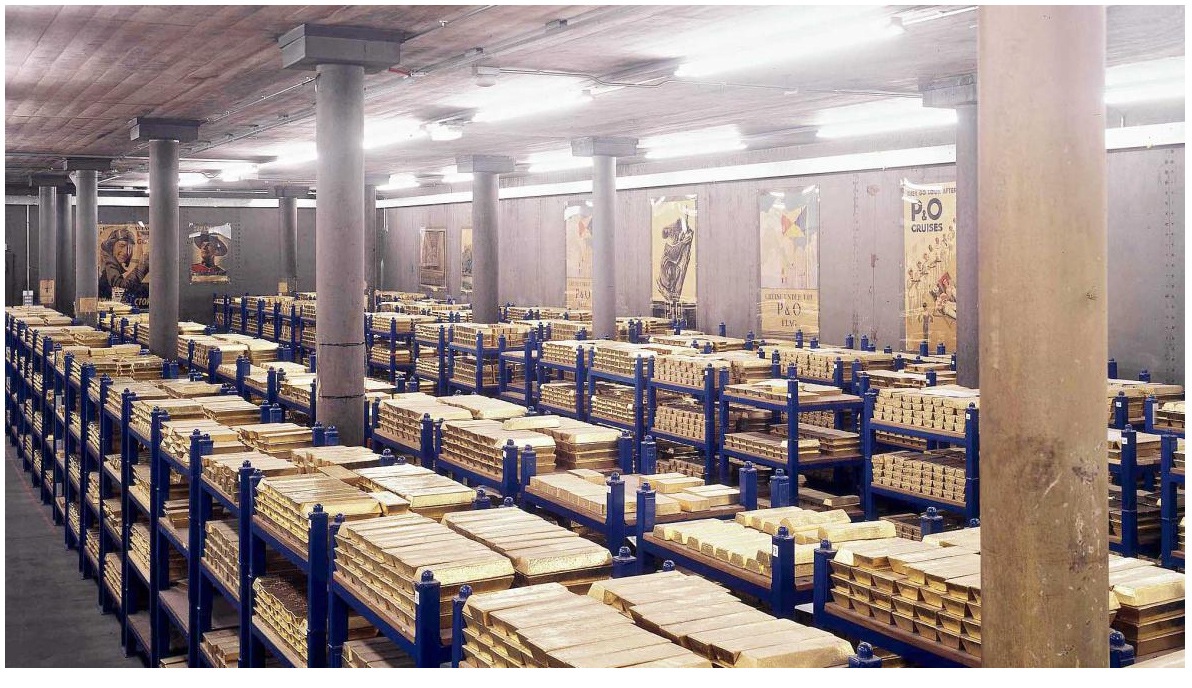HOW THE GOLD STANDARD WORKED

Gold vaults in the Bank of England
Under the gold standard the government sets a fixed ratio between its currency and gold so that, for example, 'if the US sets the price of gold at $500 an ounce, the value of the dollar would be 1/500th of an ounce of gold.' (3) Upon delivery of, say, $500 the government engages to give the bearer an ounce of gold. Hence the worthless piece of paper one has in one's hand is 'backed' by a commodity which will, one assumes, always be valuable. Of course there is always a relationship between paper money and gold - one can always buy gold and central banks even now maintain large reserves of gold as a store of reliable value. But independent of the gold standard the price of gold will fluctuate like any other commodity. Under the gold standard the ratio between a given quantity of paper money and a given quantity of gold was, supposedly, fixed.
(3) Nick Lioudis: What is the gold standard? Article posted on the Investopedia website.
A main purpose of the exercise was to limit the ability of government to issue paper money at will. To quote Herbert Hoover, 'We have gold because we cannot trust governments' (the reader will recognise one of the arguments most frequently used against Modern Money Theory). But perhaps more importantly the fact that a given quantity of money carried with it the promise of a given quantity of gold provided an internationally recognised medium of exchange. A currency attached to the gold standard stood in a fixed and known ratio to all other currencies attached to the gold standard. This however presupposed confidence in the government's ability to make good its commitment to give gold in exchange for its currency. If people engaged in international trade began to lose that confidence then they would be reluctant to use that currency. There would be a 'run' on the currency, meaning that they would try to get rid of it - it would fall in value and the Central Bank would have to intervene to shore it up by buying it at the gold standard rate, thus further depleting it's own stock of gold.
The ratio between the amount of gold the government held and the money it issued was therefore important. No-one expected it to be a one to one ratio (that was called the 'gold specie standard' and refers back to the time when money, as coinage, was gold) but the extent to which the government could issue money beyond that one to one ratio depended on confidence in the overall strength of the economy. Thus if Britain was importing more from France, say, than it was exporting then it would have to pay for those imports in francs, which would mean it had to 'buy' those French francs which would mean that the gold that had been supporting sterling would now be supporting the franc. Similarly government expenditure beyond the perceived ability of the gold reserve to sustain both government spending and the needs of the non-government sectors of the economy would produce a loss of confidence in the currency. Symbolically this would be represented as a government failure to 'balance its books', to marry its expenditure to what it was receiving in taxes. I call that 'symbolic' taking into account the observation of the Modern Money Theorists that taxes don't pay for anything. What they do is to take money out of the non-government sectors to create more fiscal space for government spending. Competition between government and non-government for limited resources runs the risk of pushing prices up resulting in inflation.